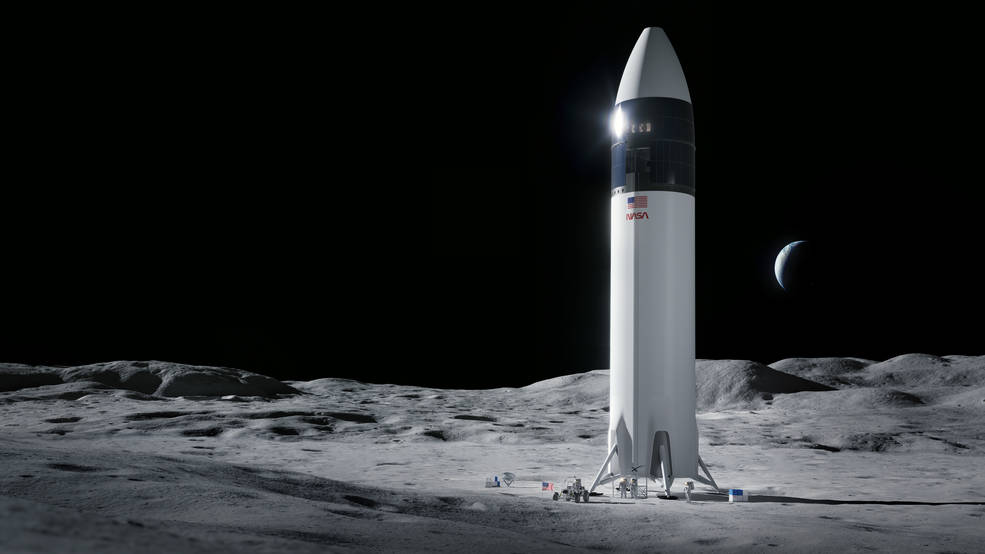
NASA Concerned with SpaceX Starship Readiness for Moon Mission

NASA officials have expressed reservations regarding the preparedness of SpaceX’s massive Starship vehicle to transport astronauts to the moon’s surface by the slated December 2025 timeline under the ambitious Artemis program. The agency has suggested the possibility of postponing the launch date until 2026 due to the unprecedented challenges SpaceX has faced.
In 2021, NASA selected Starship, touted as the most potent rocket ever built, for the Artemis 3 mission to deploy astronauts near the ice-rich lunar south pole, marking the first crewed lunar landing since the Apollo program’s termination in 1972.
However, given SpaceX’s ongoing issues, Jim Free, NASA’s associate administrator for exploration systems development, voiced concerns about meeting the December 2025 target, reports Space.com.
Free noted December 2025 “is our current manifest date, but with the difficulties that SpaceX has had, I think that’s really, really concerning,” making the comments on June 7 at a joint meeting of the U.S. National Academies’ Aeronautics and Space Engineering Board along with the Space Studies Board. “So, you can think about that slipping probably into ’26,” Free added.
The first Starship test flight occurred in April. The mission aimed to propel Starship’s upper stage to orbit the Earth, culminating in an ocean splashdown near Hawaii. However, the two stages failed to separate as planned, leading to the destruction of Starship over the Gulf of Mexico just four minutes post-launch.
Several prerequisites, including an ongoing investigation by the U.S. Federal Aviation Administration (FAA) into the launch mishap, have to be met before Starship can take flight again.
To meet the 2025 timeline, SpaceX must expedite its recovery and undertake several launches to prove Starship’s safety and crewed flight readiness. Before embarking on the Artemis 3 mission, SpaceX must send an uncrewed Starship to the lunar surface and back. Furthermore, it needs to refuel each Starship destined for the moon in an Earth-orbit “depot” using several other Starship tanker vehicles.
NASA’s Artemis program aims to establish a sustainable human presence on and around the moon by the end of the 2020s, laying the groundwork for Martian exploration by the late 2030s or early 2040s. The Artemis 3 mission is particularly ambitious as it involves the deployment of newly developed, highly complex space hardware. A potential delay to 2026 would not be surprising.
Last month, in addition to SpaceX, NASA also selected Jeff Bezos’ spaceflight company, Blue Origin, to provide a second Artemis human landing system, indicating the agency’s intention to diversify its crewed moon lander portfolio.

